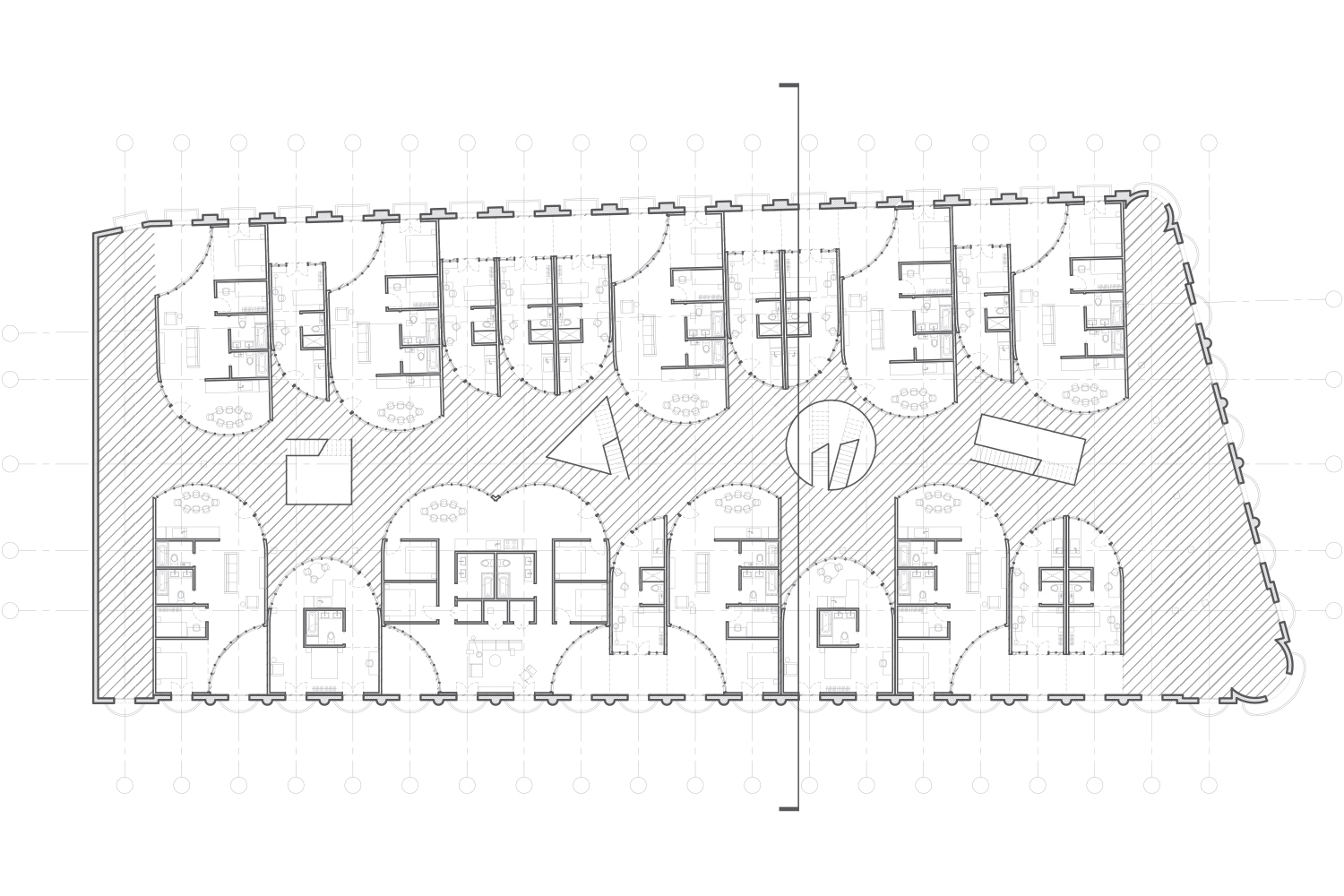In a collective interior space it is not restrictive and reductive order that generates an urbanized sense of interiority, but rather difference that provides the tensions vital for creating coincidence, playfulness and intermixing. The re-inhabitation of Via Laitana 8-10 offers the opportunity to reinterpret a social interior that serves to transform isolation into exchange.
The new housing model responds to the need for an efficient, economic housing project in an area where temporary tourist accomodations are abundant by providing a subsidized renting opportunity. The project is delimited by production and commerce, capped by spaces of participative concentration. The rooftop greenhouse provides the opportunity for residents to work in the production of saleable produce for the ground floor market, creating an interior production program advocating for a healthy and sustainable living environment. The market is unveiled at the street level, relinking it to the small retail corridors nearby and conjoining the building to the existing plaza on the North facade. The monolithic quality of the facades are sustained, generating a shell for new social interior activity to inhabit.
Client
Competition
Architect
Dylan Alberts Otte
Team
Photography
Location
Barcelona, Spain
Year
2017
@ Todos los derechos reservados
Hosting y diseño web: LEVEL4









